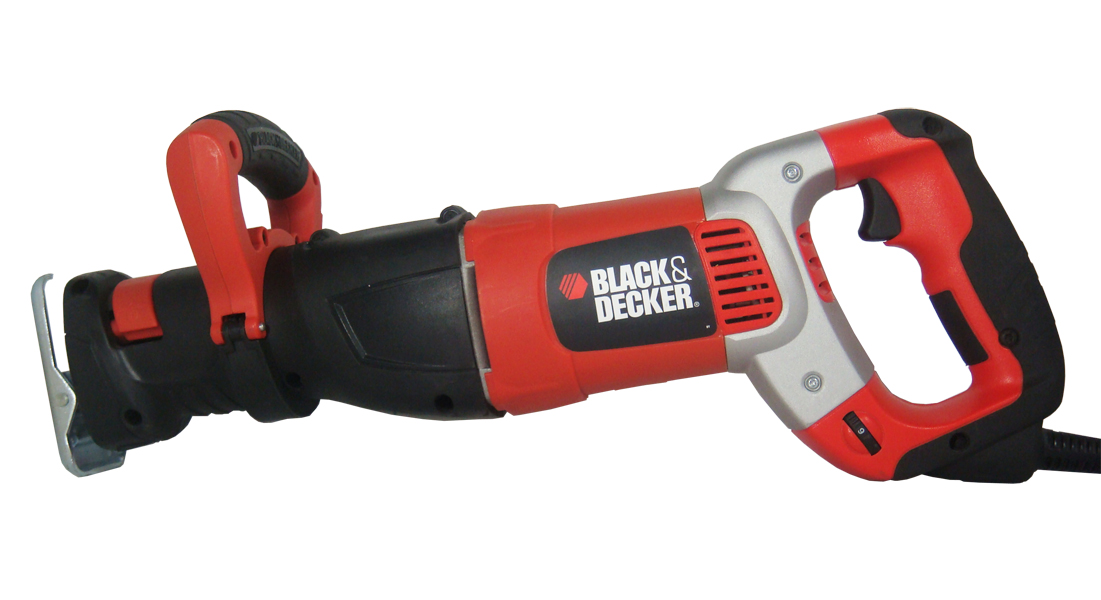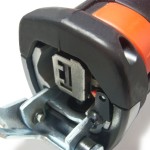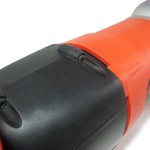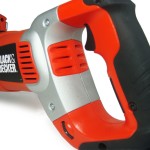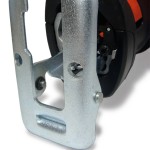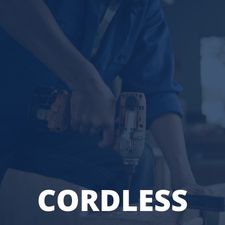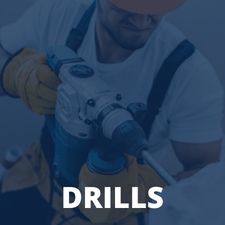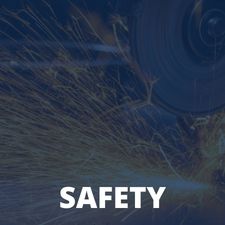The Best Cordless Reciprocating Saws Australia, Information, Buyers Guides, Comparisons and Reviews
A cordless reciprocating saw is a worthy tool to have in your kit for any DIYer or tradie. Also known as sabre saws or ‘recipro’ saws, if you want to make rapid rough cuts in-situ, they’re the go-to power saw.
From demolition work to garden maintenance, reciprocating saws are powerful and versatile. Thanks to their design, they can perform labour-intensive tasks with ease. And, being battery-operated means you have the freedom to work anywhere.
In this guide, you’ll find everything you need to know. So if you’re ready to take on your next project with the right saw in hand — read on to find the best reciprocating saw for you.
Cordless Reciprocating Saw Top Picks
| IMAGE | PRODUCT | DETAILS | ||
|---|---|---|---|---|
|
Best for Tight Spaces 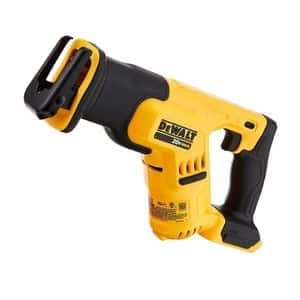
|
Best for Tight Spaces
|
DeWalt Reciprocating Saw
|
Features
|
Check Price at Amazon Check Price at Toolmart DeWalt Reciprocating Saw Review DeWalt Reciprocating Saw Review |
|
Best Cutting Depth 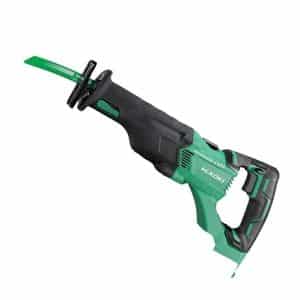
|
Best Cutting Depth
|
HiKOKI Cordless Reciprocating Saw
|
Features
|
Check Price at AmazonCheck Price at Toolmart HiKOKI Cordless Reciprocating Saw Review HiKOKI Cordless Reciprocating Saw Review |
|
Best for Durability 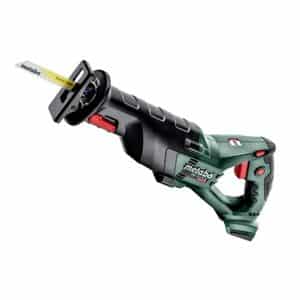
|
Best for Durability
|
Metabo Reciprocating Saw
|
Features
|
Check Price at Toolmart Metabo Reciprocating Saw Review Metabo Reciprocating Saw Review |
|
Best for Versatility 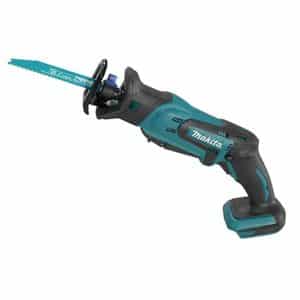
|
Best for Versatility
|
Makita Brushless Reciprocating Saw Saw
|
Features
|
Check Price at Amazon Makita Brushless Reciprocating Saw Review Makita Brushless Reciprocating Saw Review |
|
Best Multipurpose Cordless Reciprocating Saw 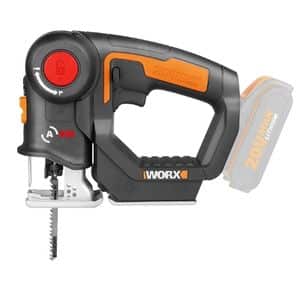
|
Best Multipurpose Cordless Reciprocating Saw
|
WORX 20V Reciprocating Saw
|
Features
|
Check Price at Amazon WORX 20V Reciprocating Saw Review WORX 20V Reciprocating Saw Saw Review |
|
Best Cordless Reciprocating Saw for Pruning 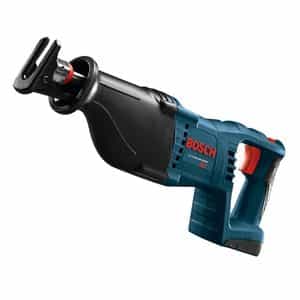
|
Best Cordless Reciprocating Saw for Pruning
|
Bosch Reciprocating Saw
|
Features
|
Check Price at Amazon Bosch Reciprocating Saw Review Bosch Reciprocating Saw Review |
|
Best for Heavy-Duty Use 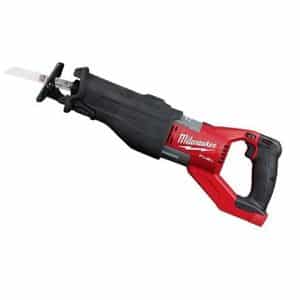
|
Best for Heavy-Duty Use
|
Milwaukee M18 Reciprocating Saw
|
Features
|
Check Price at Toolmart Milwaukee M18 Reciprocating Saw Milwaukee M18 Reciprocating Saw |
|
Best Budget Reciprocating Saw 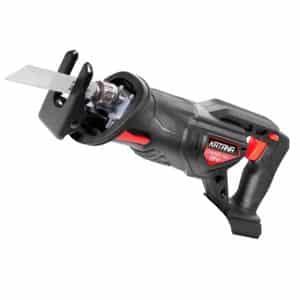
|
Best Budget Reciprocating Saw
|
Katana Reciprocating Saw
|
Features
|
Check Price at Toolmart Katana Reciprocating Saw Review Katana Reciprocating Saw Review |
– Reciprocating Saw Blades
– Best Reciprocating Saws To Buy
– Reciprocating Saw Operating Tips
– Recipricating Saw FAQs
Reciprocating saws (also known as sabre saws, or ‘recipro’ saws) are basically an electric handsaw, and are very powerful and adaptable. They tend to be characterised as a demolition tool, as their design enables them to easily perform very labour-intensive applications. In this guide you will find everything you need to know to buy the best reciprocating saw for you.
What are Reciprocating Saws Used For?
Reciprocating saws are designed to cut a range of materials, including wood, metal and plastics, but are not known for their accuracy. If it is accuracy you are after, a power tool such as a circular saw may be a more worthwhile investment.
Reciprocating saws are the only type of saw that can perform flush cuts. This is when the blade is pressed up against a flat surface to cut off a protruding element and make it flush with the surface. This type of cut requires specialised flexible blades, as they must bend along the flat surface.
They are also one of the only saws that can perform plunge cuts. Plunge cuts are where a cut is commenced in the middle of a material without any initial hole. This is done by starting the saw when it is almost horizontal and slowly angling it into the material (only using blades specifically designed for this type of cut).
Types of Reciprocating Saws Available In Australia
There are two main types of reciprocating saws; light duty and heavy duty. The best reciprocating saw for you will fall into one of these two categories.
Light Duty Reciprocating Saws
These reciprocating saws are relatively small and lightweight, but pack quite a punch. They can be used for a multitude of applications, including small pruning tasks and general purpose cutting. You can purchase a light duty cordless reciprocating saws or corded reciprocating saws are also available.
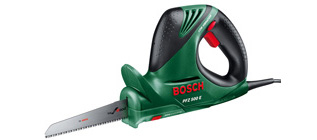
Heavy Duty Reciprocating Saws
Heavy-duty reciprocating saws are the largest, most powerful, and most common reciprocating saws available. They are quite heavy, but good luck finding an application that exceeds their capabilities. You can purchase a heavy duty cordless reciprocating saws, for the ultimate power you may want to check out an electric reciprocating saw.
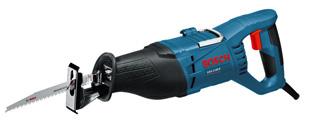
Reciprocating Saws Features
Reciprocating saws feature many different components, and having a sound understanding of these plays an important part in the purchasing process. Knowledge of these parts also aids in the efficient and effective use of the tool.
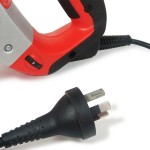 Reciprocating Saw Power Source
Reciprocating Saw Power Source
Electric Reciprocating Saws
The power source is the component that provides the tool with electricity. On reciprocating saws, this is done through a wired connection to a mains power supply. In Australia, reciprocating saws operate off mains power (240V) through a 10A socket.
Cordless Reciprocating Saws
Cordless reciprocating saws that are powered by a battery and a charger are also available and bear very similar features to those described below. They are generally not as powerful as their corded equivalents and require regular charging, but are usually considerably light in weight and have unmatched portability.
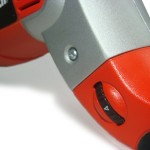 Switch
Switch
The switch allows the electricity from the power source to flow through the tool. A reciprocating saw is activated by a trigger switch. When the trigger is depressed, the tool will begin to operate.
Lock-On Button
This button can be pushed while the trigger is depressed and the trigger will lock on to that set speed. To cease this function, simply pull the trigger.
Make sure this button has been released prior to disconnecting the tool. If not, the tool will begin to operate upon reconnection and may result in injury. For more reciprocating saw safety recommendations.
Reciprocating Saw Motor
Motors are the main component of all power tools, and are the component that converts the electricity into motion. The power that motors produce is measured in Watts. Motors used in corded reciprocating saws are called AC motors (they are also known as universal or series motors). They will have an input power of between 400W and 1300W, and weigh between 1.5kg and 4.5kg.
Many power tool manufacturers will state only the input power of the saw, as this is the larger and more impressive number. This value is actually just an indication of the demand a tool will place on a power outlet under normal operating conditions. The power output at the blade, though, is significantly less than the input power. This is due to the efficiency of the saw’s internal components, and how power is transferred through the machine. Generally speaking, higher quality tools and the best reciprocating saws have greater efficiency and require less input power to produce the same power output. Therefore, although it is uncommon for most manufacturers to include a power output value, it is a much better way of comparing tools. With sawing power tools, the best indication of power is wattage, as speed is generally a constant.
Most professional quality tools will have a round port on either side of their housing. These ports give simple access (with a slotted screwdriver) to the most frequently wearing component of any tool – it’s brushes.
Reciprocating Saw Transmission
Also known as a gearbox, transmissions dictate the speed range (strokes per minute, or spm) that a reciprocating saw can operate at, and the power it will produce.
Transmissions in reciprocating saws most commonly contain a single gear, but the very best reciprocating saws in Australia come with two for added versatility. This can be distinguished by a small numbered gear switch or dial on the saw. On reciprocating saws with a single gear, power and speed are balanced for optimal cutting effectiveness. Those with two gears feature more power in their first gear, and more speed in their second gear.
Each time the blade moves up and down it is known as a stroke. The speed that the blade oscillates at is called the stroke rate. This rate describes the amount of times the blade travels up and down in a minute. Reciprocating saws can attain speeds of up to 3500spm.
The length of each stroke varies amongst different models of reciprocating saws, and ranges from 13mm to 32mm. For example, if the saw has a stroke length of 32mm, the blade will travel 32mm up, and 32mm down. The longer the stroke length of the saw, the more efficient the saw will be. This is because a larger stroke length allows more teeth to come into contact with the material per stroke.
A reciprocating saw’s efficiency is predominantly determined by its blade stroke length and the stroke rate.
Depending on the model, reciprocating saws are capable of cutting up to 300mm in wood, 130mm in steel, and up to 160mm in plastic. More than anything though, it is the fitted blade that dictate a reciprocating saw’s cutting capacities.
For faster cutting, the best reciprocating saws will feature a pendulum setting (the same action found on jigsaws).
Reciprocating Saw Speed Control Dial
The speed control dial is a small numbered wheel on the top of most reciprocating saws that allows users to preset a speed selection, and gain more control over the tool.
Reciprocating Saw Blade Clamp
The blade clamp is the component of the reciprocating saw that secures the blade in place.
On some reciprocating saws, the blade clamp is in the form of one or two hex drive screws, that must be loosened and tightened (with a supplied allen key) to clamp or lock the blade in place.
On the best reciprocating saws, the blade clamp is nearly always a keyless system, which enables a blade to be changed in seconds.
For added versatility, the design of most blade clamps allows the blade to be inserted upside down – some even allow the blade to be inserted left to right.
Reciprocating Saw Housing
The housing of a power tool is the casing that protects the internal components.
Reciprocating saws will have either a clamshell housing, or a jampot housing.
A clamshell housing is where the housing is manufactured in two plastic halves, and where these halves are fixed together around the internal components.
A jampot housing is where the internal components of the saw are inserted into the housing and then a lid (usually an alloy casing) is screwed down to seal it. This durable style of housing is generally used on heavy duty power tools and the best reciprocating saws, and is much more effective at keeping the internal components aligned and the power tool structurally sound.
Some reciprocating saws also have built in shock absorbing capabilities in order to quell excessive vibrations during prolonged use.
Reciprocating Saw Handle
The handle is the component of the reciprocating saw that you hold with your dominant hand that allows you to provide pressure and stability to the tool.
Reciprocating Saw Support Handle
The support handle is a moulded grip (commonly rubber) located toward the front of reciprocating saws that you can use to more accurately guide the saw blade through a material.
Some reciprocating saws will also feature an additional and detachable side handle that clamps around the support handle.
Reciprocating Saws Adjustable Shoe
The adjustable shoe of a reciprocating saw is the plate that rests on the material and provides stability as cutting occurs. It also allows for various lengths of the blade to be used, depending on the application.
The shoe’s angle changes as the tool is pressed against the job, and adjustments to the shoe’s reach are usually made by pulling a quick release lever or button.
Reciprocating Saw Blades
The blade that a reciprocating saw uses is the key characteristic that defines its cutting capabilities, and is the tool’s primary accessory.
Always ensure the tool is disconnected from the power source prior to changing accessories. For more safety recommendations, click here.
There are different types of reciprocating saw blades available, and each one has its own style and characteristics.
Reciprocating Saw Blade Shank Type
The shank is the part of the blade that locks into a reciprocating saw’s blade clamp.
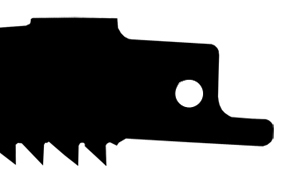 The most common style of blade shank used in reciprocating saws and also the one with the widest range of blades is the ½” universal shank. This is the industry standard amongst manufacturers, and is what all the best reciprocating saws utilise.
The most common style of blade shank used in reciprocating saws and also the one with the widest range of blades is the ½” universal shank. This is the industry standard amongst manufacturers, and is what all the best reciprocating saws utilise.
Some reciprocating saw blade manufacturers do however have their own blade shank design – the only blades that their products are able to use. This is a common feature on general purpose reciprocating saws. If you are unsure what blade shank your saw takes, you should consult your tool’s manual.
Reciprocating Saw Blade Construction
Reciprocating saw blades can be designed for either straight, curved, flush, or plunge cuts. All blades are capable of cutting straight lines, but those that have constant parallel edges are designed especially for repetitive straight cutting.
Curved cutting blades can be recognised by the large curve that joins the shank and the extra thin blade.
Flush cutting blades are generally quite long to give the blade enough flex so that it easily bends along a surface. Not all blades are designed to perform this type of cut, so you must ensure it is specified on the manufacturer’s packaging.
Plunge cutting blades are harder to recognise than their equivalent jigsaw counterparts as they do not feature a very unique tip. They can be identified however by their tapered backs.
Reciprocating saw blades are generally made of either high carbon steel or high speed steel (or a bit of both). High carbon steel blades are very flexible, but wear the fastest and are easily damaged from excessive heat. High speed steel blades are harder and more resistant to wear, but are less flexible. To achieve the best of both worlds and for more demanding applications, bi-metal blades were designed. These are the best reciprocating saw blades as they have high carbon steel bodies and high speed steel teeth, providing both flexibility and durability, and are essentially shatter-proof. Some reciprocating saw blades also feature tungsten carbide tipped (TCT) teeth for use on specialised applications.
Reciprocating saw blades also have differing quantities of teeth. This is usually relative to their application but generally speaking, the more teeth the finer and slower the cut. The number of teeth on a reciprocating saw blade is usually measured by a ‘tooth-per-inch’ (TPI) measurement.
Reciprocating Saw Blade Applications
There is not one reciprocating saw blade that will cut everything. Each saw blade can be used on a small selection of different materials. These materials include:
Aluminium
Carpet
Cement sheets
Green wood
Hardwoods
Plasterboard
Sheet metal
Softwoods
Stainless steel
Wood with nails
Reciprocating Saw Blade Cutting Capacities
Each blade will have recommended thicknesses that it is able to cut through on specific materials. A shorter blade will have a smaller cutting capacity than a longer blade (and finer teeth). The specific capacity will be stated on the blade’s packaging upon purchase.
Reciprocating saw blades can become extremely hot after use, and it is therefore recommended you wear gloves when removing them. For more safety recommendations.
Once the correct blade has been selected and fitted, it is important to remember to let the blade do the work. Forcing the saw along will only result in substandard work and shorter blade and tool life. If the work rate decreases, it is most likely the blade is blunt and needs to be changed.
With its variable speed control dial, it enables you to customise the cutting pace to the type of material. It also has a tool-less blade change system, making it easy to switch out the blade without the need for additional tools.
The Makita reciprocating saw 18v also includes a built-in LED, which is ideal for working in low-light conditions. And, the soft grip handle offers added comfort and control — handy for time-lengthy projects. Plus, the lock-off lever helps prevent the tool from accidentally turning on while not in use.
Pros
Built-in LED light.
Soft grip handle.
Lock-off lever.
Variable speed control dial.
Tool-less blade change system.
Cons
Stroke length — 13 mm — could be longer.
Tool-less blade change system.
DeWalt Compact Reciprocating Saw (DCS387B)

Our Rating: 4.8
It’s capable of cutting through wood, plasterboard, even plastics and light to heavy-duty metals — a wide range of applications. And, with a variable cutting speed of up to 2900 spm that’s trigger-operated, it’s easy to pick your pace to match your material.
Including a four-way blade clamp, you’re able to saw in different directions — useful for flush cutting. Moreover, the blade can be exchanged without any extra tools thanks to the tool-less blade changing mechanism.
The DCS387B also includes a pivoting adjustable shoe to help stabilise the tool, and the LED light illuminates the cutting area. What’s more, the ergonomic handle provides added comfort and control during operation.
Pros
Bright LED light.
Powerful 20-volt MAX battery.
Variable speed trigger.
Versatile blade clamp.
Pivoting adjustable shoe.
Cons
Tool only — additional purchases may be required.
With two speed settings controlled via a trigger switch, it reduces the risk of kickback. Plus, the generous stroke length of almost 30 mm, permits light work of tough greenwood and other large tree limbs and foliage. Aside from wood, this cordless recipro saw is also man enough for tackling metals and plastics.
The Bosch CRS180 boasts a unique Lockjaw blade holder design from Bosch, allowing for effortless and one-handed blade replacements. This saves you a lot of hassle if your blade breaks or you need to switch mid-project. Additionally, the ergonomic handle with a comfortable grip area helps reduce user fatigue and enhance control.
To top it off, the saw comes with Electronic Motor Protection (EMP) to help guard against motor overload and extend its lifetime.
Pros
Adjustable cutting speed.
Ergonomic handle.
Quick blade changes.
Motor protection system.
Compatible with Bosch 18-volt cells.
Cons
Doesn’t come with a work light.
The tool-less blade switch system permits quick and effortless blade exchanges when necessary. And, with the dust blower function, you can keep your work area clean and free of debris.
This model is compatible with the WORX 20V MAX Powershare battery range (cell not included). This means if you have other WORX tools, you won’t need to purchase a battery — another cost saver.
Pros
Dual purpose — recip/jigsaw in one.
Suitable for wood, pipe, and plastics.
Dust blower function.
Lightweight — 1.9 kg.
Compatible with WORX 20V MAX Powershare battery range.
Cons
Noisy operation.
Metabo Reciprocating Saw

Our Rating: 4.7
This tool has a rotatable saw blade and an angled soft grip handle, which makes overhead work more comfortable. And, an integrated LED points directly onto your cutting line — ideal for dimly lit spaces.
The saw is also protected against dust and water splashes — another tick in the durability box.
With a stroke rate of 0-2700 spm and a saw blade stroke of 32 mm (1.25 inches), this powerful tool allows for quick cuts, saving you time and energy. Plus, its Ultra-M technology-powered 18-volt battery pack (not included) — offers high performance and extended run time, so you can tackle even the toughest of projects with ease.
Pros
Brushless motor.
Depth gauge included for plunge cuts.
Robust gear housing.
Rotatable blade — 180 degrees.
Dust and water gear protection.
Cons
Heavy on the wallet.
This cordless recip boasts five adjustable speed settings, letting you customise the saw’s performance to suit your project. Combined with its variable speed trigger, you can easily achieve efficient cuts — even with metal. It also comes with orbital action — great for rapidly making rough cuts.
Other features include a patented tool-free blade clamp for easy blade changes and an LED light to illuminate your target area.
Pros
High power and speed for efficient cuts.
Depth gauge included for plunge cuts.
Orbital action.
Adjustable shoe for better blade life.
Comes with storage hook and case.
Cons
Heavy — 5.5 kg.
Katana Reciprocating Saw
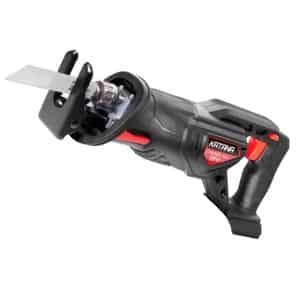
Our Rating: 4.5
Despite its low cost, it doesn’t scrimp on features — it comes with a tool-free adjustable shoe and blade-change mechanism. These make it easy to switch between tasks and blades, saving you time and effort on your projects.
The Katana also cuts at a speed of 3000 spm — albeit non-variable — and is suitable for wood up to 80mm and metals of 10 mm.
With a unit weight of 1.8 kg, there is less of a chance of operator fatigue. Although, you couldn’t use it one-handed. This reciprocating saw is battery powered by an 18-volt cell, which you’ll need to buy, unless you have other tools paired with the Katana CHARGE-ALL lineup.
Lastly, this tool comes with a generous five-year warranty.
Pros
Powerful cutting performance.
Value for money.
Deep stroke length.
Versatile cutting capabilities.
Easy blade and shoe adjustments.
Cons
Vibration could be an issue.
HiKOKI Reciprocating Saw

Our Rating: 4.8
It features an auto mode function that adjusts the speed based on the material being addressed. Plus, it has an electronic control panel that allows you to manually select between low, medium, and high cutting speeds — 1600 / 2300 / 2500 spm.
This model also arrives with a brushless motor — meaning minimal maintenance, better runtimes, and it increases the life of the unit.
Sporting a slim front design and a shock-absorbing handle, the HiKOKI reduces vibration and increases user comfort — enabling you to work for longer. What’s more, the blade can be mounted in either the upward or downward direction, so you can address your target the easiest way possible.
Pros
Auto mode adjusts cutting speed.
Includes hanging hook.
Six-year warranty.
Front-mounted work light.
Compatible with Hitachi cells.
Cons
Low top cutting speed compared to others.
Best Reciprocating Saw To Buy In Australia
When purchasing a reciprocating saw, decide what features are most important to you (from the specifications above) and make sure these are included in your final purchase. The main considerations you should make include how much power you require, the size and weight of the tool, whether you need it to be cordless, and how often you will be using it.
The defining point in choosing a reciprocating saw is that you must feel comfortable handling the tool for its desired purpose.
Reciprocating saw manufacturers will either direct their products at the DIY or professional market. DIY tools are designed for home use and generally include plenty of features for a very modest price. They also tend to have very generous warranty periods, including replacement warranties. Professional tools are designed for commercial use and are built for durability, performance, and reliability. Their warranty periods tend to be much shorter than DIY tools, and are exclusively repair warranties. The main advantage of these tools is that they should well outlive their warranty period, and if they require repair and maintenance spare parts are readily available.
The price of any tool will depend on the quality, capabilities, and features of the model. Bear in mind that at least one of these three elements is commonly sacrificed by power tool manufacturers to reduce the tool’s price and increase its sales. After all, price is the most important factor for consumers.
Reciprocating saws can cost anywhere from $50 to $800.
It is important to bear in mind that the entire cost of any power tool is not just it’s initial purchase cost. Added costs can include accessories for the tool to function, maintenance, downtime, and replacement costs. Buying according to your requirements will help to keep these costs to a minimum.
Reciprocating Saw Operating Tips
The following tips will help to preserve the life of your reciprocating saw, increase your efficiency, and most importantly, keep you safe.
- When cutting hard materials like metals, slower speeds should be used. Alternatively, when cutting soft materials like wood, faster speeds should be used.
- If you work at a low stroke rate for a long period of time, reciprocating saws can heat up quite rapidly. It is a good idea to allow the tool to cool naturally by running it at it’s maximum stroke rate with no load.
- To maintain optimal cutting efficiency, reciprocating saw blades should be at least 25mm (1?) longer than the material they are cutting.
- Never apply excessive pressure to the tool when cutting- always let the blade do the work.
- Always ensure blades are sharp to ensure less load on the tool and better cutting results.
- Cutting oil is recommended for metal cutting applications (with the exception of brass and iron)
- Always let the blade cool naturally. Never force them to cool down in water (or any other liquid).
- Always operate the saw with two hands and when positioned in a firm stance.
- Let the blade run freely for a few seconds before commencing the cut.
Personal protective equipment (PPE) must always be worn when operating power tools. For more information on PPE and power tool safety.
Was this guide helpful? Has anything been left out? Are there any improvements that could be made? Please take a moment of your time and click here to provide your valuable feedback.
Conclusion
With the right blade, cordless reciprocating saws can make light work of many applications — from plasterboard, hardwoods, and metals, like aluminium or stainless steel. And, they’re also capable of a variety of cuts, like plunge and flush cuts, which few power saws can make a claim to.
Battery-operated recipros are also convenient because they don’t require a power outlet. Hence, can be used in locations where access to electricity is limited.
While all our top picks are worthy of consideration, if you’re looking for a trade-grade unit, our best reciprocating saw in Australia award has to go to the DeWalt. And for DIY-specific use, check out the HiKOKI.
Best Reciprocating Saw Australia FAQs
Q: What Can a Battery Powered Reciprocating Saw Cut?
A reciprocating saw, also known as a ‘Sawzall,’ is a powerful cutting tool that can handle wood, metal, plastic, and even masonry. It’s great for demolition, remodelling and general garden maintenance.
Q: Why Is It Called a Reciprocating Saw?
The name derives from the tool’s unique cutting action, which involves a back-and-forth, or reciprocating, movement of the blade. This action allows the blade to quickly and efficiently cut through a variety of materials.
Q: Is Brushless Battery Reciprocating Saw Better?
Brushless reciprocating saws are considered better than brushed ones due to their longer lifespan, low maintenance and improved performance. Plus, brushless motors are more efficient — and with a reciprocating saw that’s battery powered, this is crucial — it means longer run times. However, the trade-off is that they’re generally more expensive than brushed models.
Q: What Are Reciprocating Saws Best For?
Reciprocating saws are ideal for heavy-duty cutting tasks that require a powerful and versatile tool. You can use them for:
- Demolition projects.
- Cutting pipes.
- Flush cuts.
- Plunge cuts.
- Delimbing trees.
- Sawing through/removing nails.
- Shaping plasterboard.
- Cutting in awkward areas.
ToolCobber.com.au is a participant in the Amazon Services LLC Associates Program, an affiliate advertising program designed to provide a means for sites to earn advertising fees by advertising and linking to Amazon.com. Additionally, ToolCobber.com.au participates in various other affiliate programs, and we sometimes get a commission through purchases made through our links.


